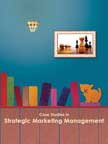Marketing Communications
 |
Details
Textbook:
Pages : 370; Paperback;
210 X 275 mm approx.
Suggested Case Studies
Workbook:
Pages :
299; Paperback;
210 X 275 mm approx, Sample Applied Theory Questions
Pricing
Textbook Price: Rs. 750;
Workbook Price: Rs. 700;
Available only in INDIA
Buy Now
Please allow 5 to 10 days for delivery.
Detail Table of Contents
Consumer Buying Behavior : Chapter 2
SUMMARY:
Understanding consumer behavior can help the advertisers develop advertisement campaigns effectively. Consumers will pass through a series of steps before making a purchase. These steps include problem recognition, information search, alternative evaluation, purchase decision and post purchase evaluation. |
|
Change in desired state can occur due to reference groups and novelty seeking behavior of the consumers. Change in actual state of affairs can occur due to stock out situations, arousal of needs, and post purchase evaluation. Change in both states can be occurred due to change in financial position of the customers, changes in family, changes in customer's physical development.
Thus the focus of advertisers at this stage is to create a category need so that the consumer perceive a problem. The objective of communication campaigns is also to make the customers relate the problem with the company’s products.
The next step in the consumer buying process is information search. A consumer will search for information regarding solutions for the problem recognized in the previous step. There are two types of searches that are performed by the consumer- internal search and external search. In internal search, a consumer will recall the brands that he knows while external search involves gathering information about solutions from various external sources. These sources include personal sources, market controlled sources, public sources and self experience sources. The intensity of external search depends on the motivation of the consumer to search, product knowledge and education levels of the consumer and the consumer’s perceived cost-benefits of the search.
Another important psychological element that influences the consumer information search process is perception. Perception can be defined as a three-step process that involves selection, organization and interpretation of the information received in a meaningful way. Perception influences the way consumers receive information. At the information search stage the communication campaigns should be informative in nature, so an advertiser should provide information about the product and its attributes to consumers. This helps in creating brand awareness and dispelling doubts regarding the product among consumers.
The next step in the consumer buying process is evaluation of alternatives on which the information is gathered. For evaluation, a consumer will not consider all brands available in the market. He will shortlist a set of choices on which evaluation is done. This is known as the evoked set. Evoked set can be defined as set of brands that a consumer will remember while making the purchase decision. It is more likely that consumer will choose a brand from the evoked set. Thus the focus of advertisers at this stage is to place the brand in the consumer’s evoked set, thereby increasing the probability of the consumer selecting the brand.
Another key element that influences the evaluation process is the attitude of the consumer towards the product. A positive attitude towards a particular brand will make a consumer consider that brand and a negative attitude towards it will result in rejection of the brand. Thus, advertisers try to create a favorable attitude among consumers towards their brand. Multi-attribute models and decision rules will help the company in understanding the consumer attitudes.
Purchasing decision is the next step in the consumer buying process. At this stage consumer will make a final decision regarding the brand to be purchased. A consumer will also decide about issues like where to buy, when to buy and how much quantity to buy.
The final step in the consumer buying process is the post purchase evaluation. At this stage, the consumer will evaluate performance in terms of his expectations. If the product does not meet his expectations then he will experience cognitive dissonance. This can be reduced by running communication campaigns that reassure the consumer that his decision is right and creating positive image about the brand.
Apart from understanding the consumer buying process, advertisers need to study the consumer learning process which has an influence on buying behavior. The consumer learning is defined as "the process by which individuals acquire the purchase and consumption knowledge and experience they apply to future related behavior." Consumer learning can be explained using two theories -- behavioral learning theory and the cognitive learning theory.
Thus, understanding the consumer buying process will help the advertiser in understanding consumers’ needs, perception and attitudes. Thereby, they can develop effective advertising strategies that can influence consumer buying behavior.



